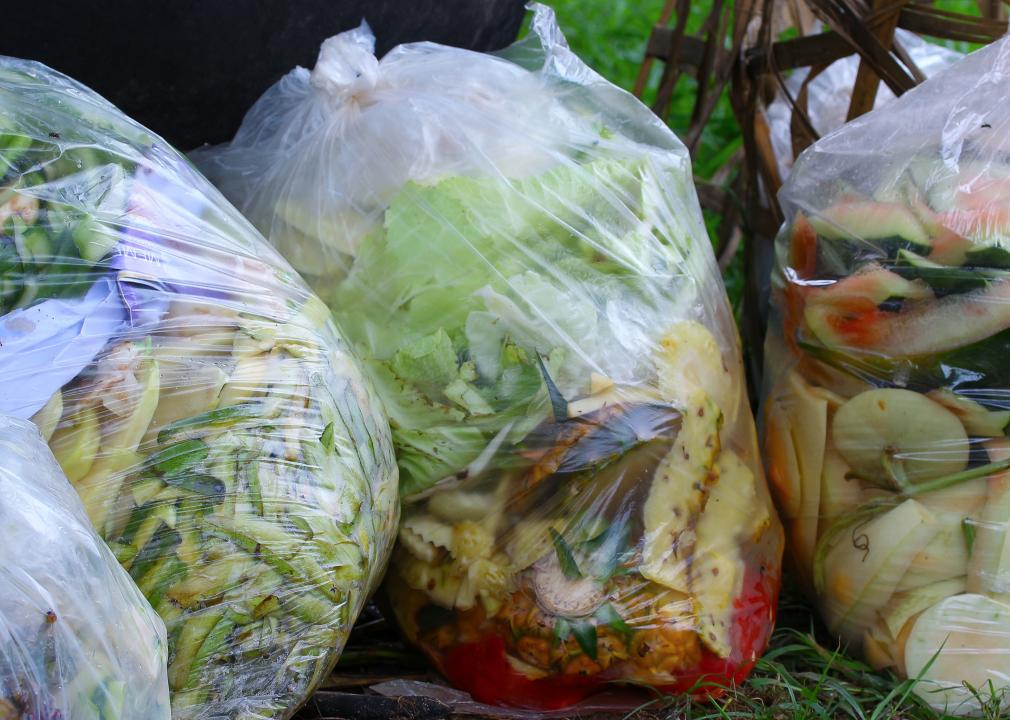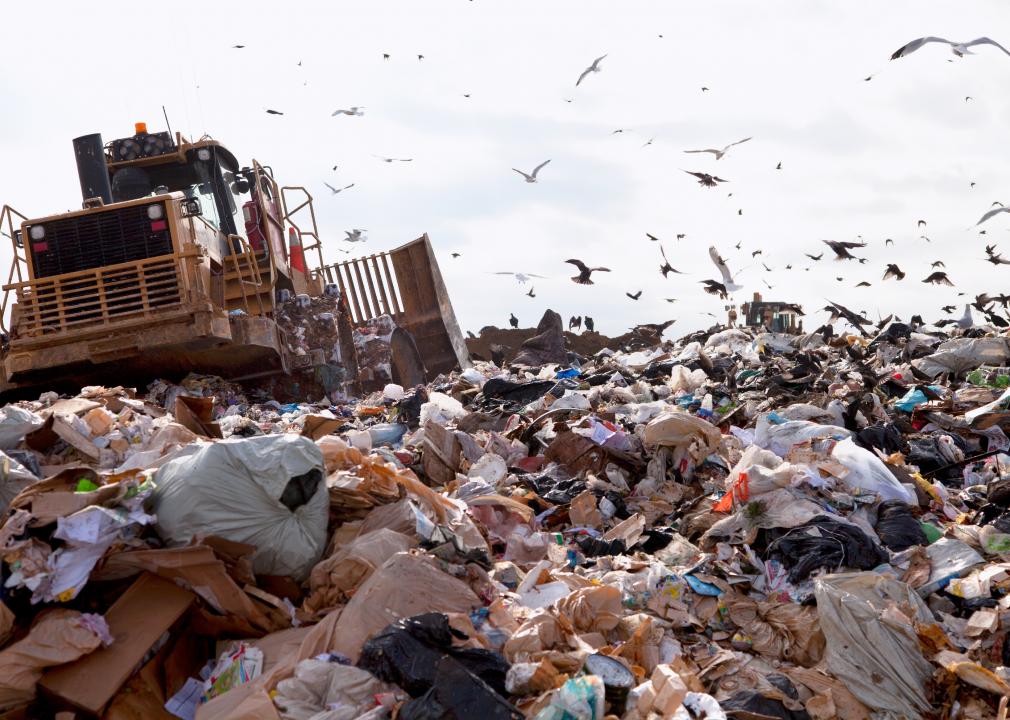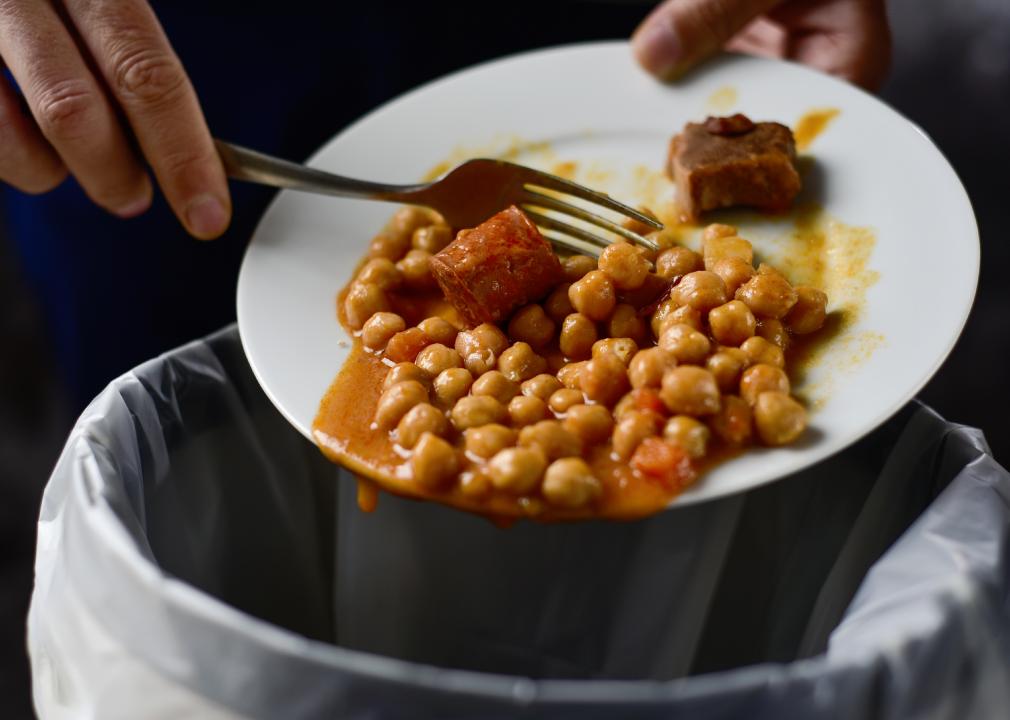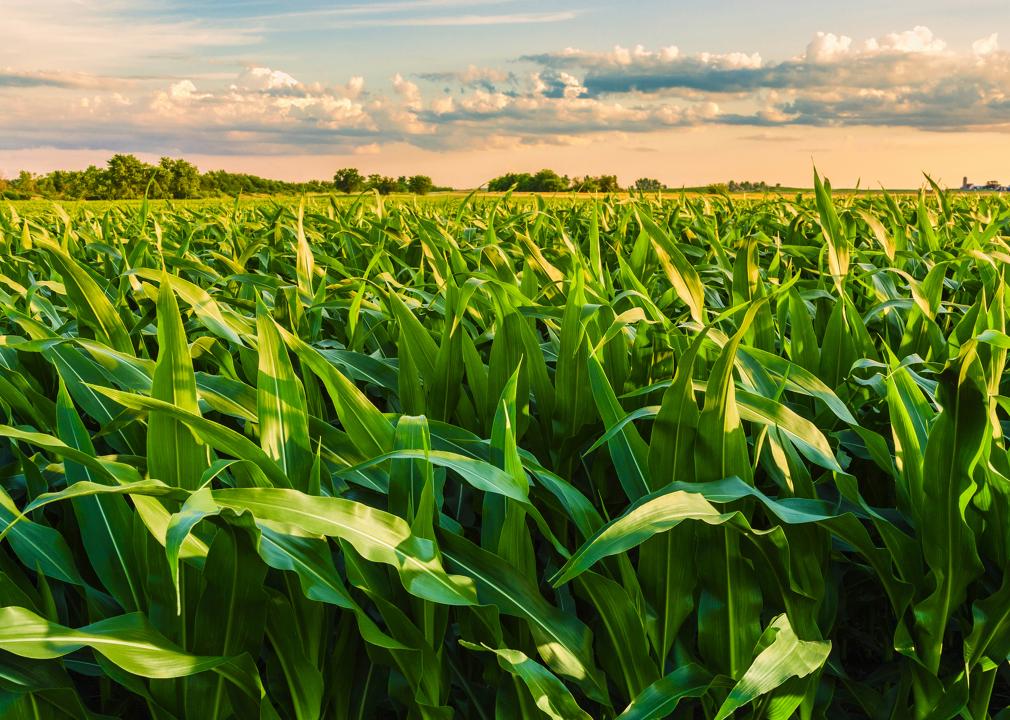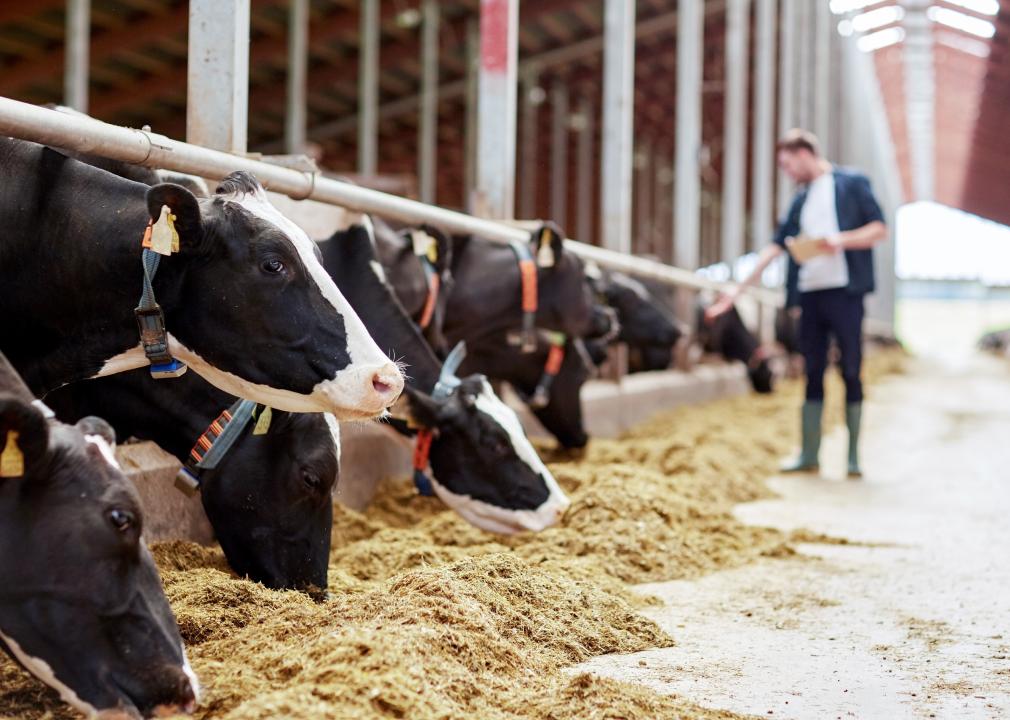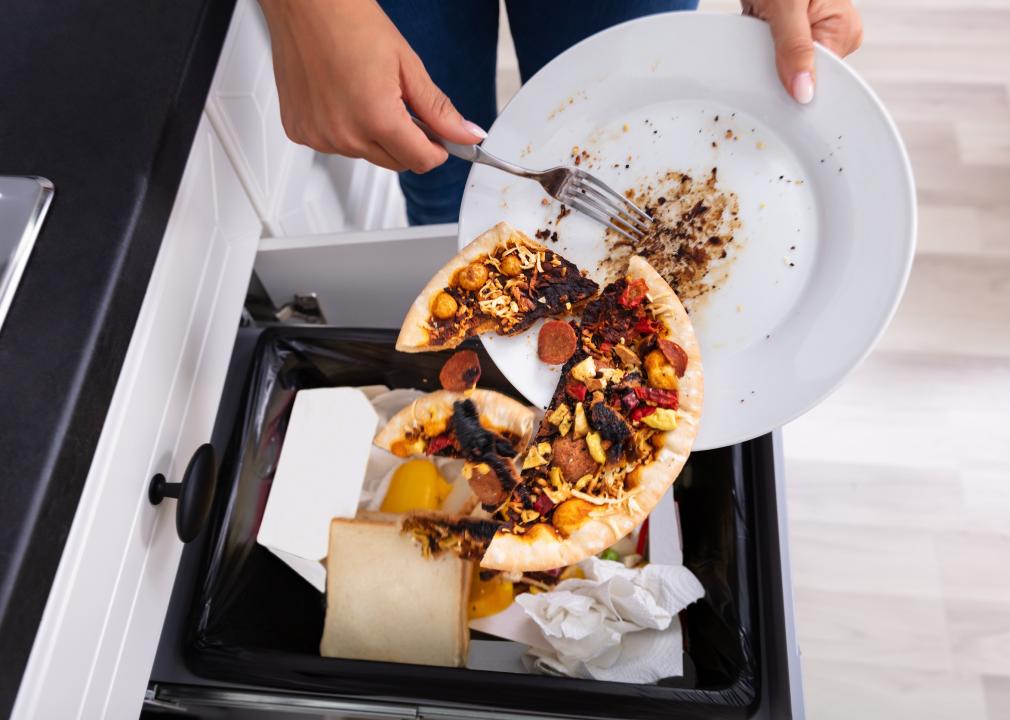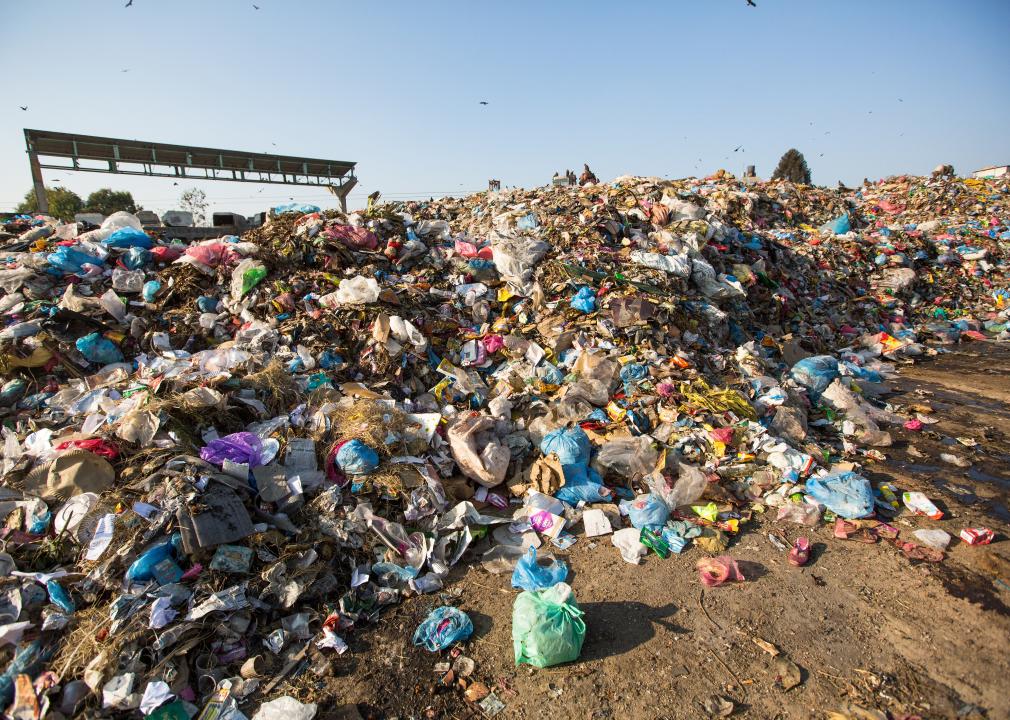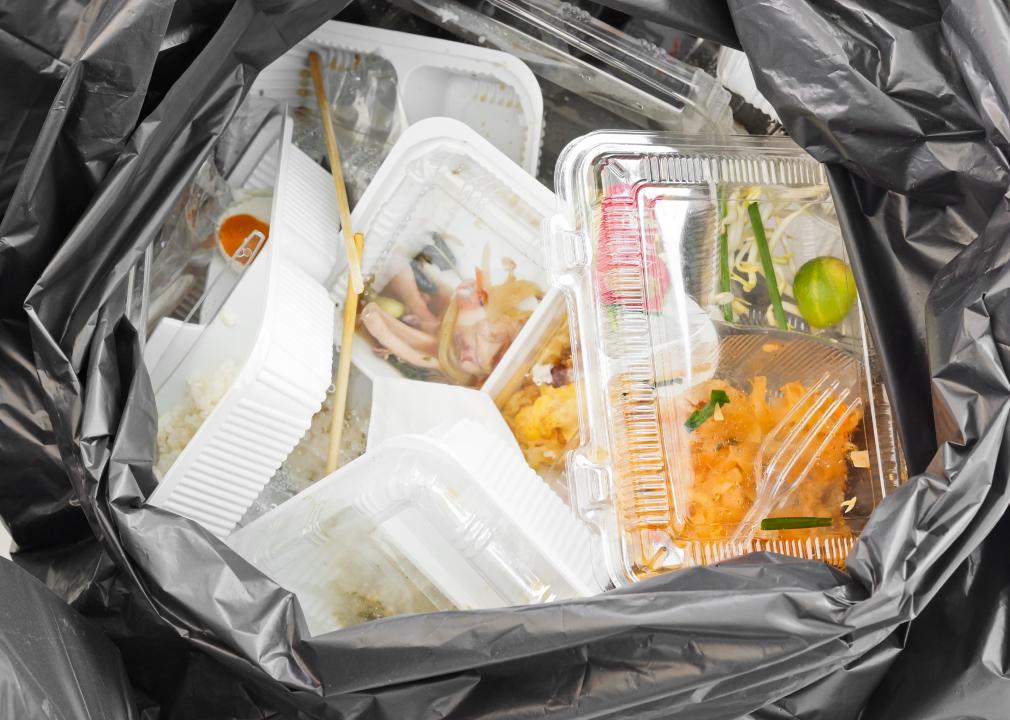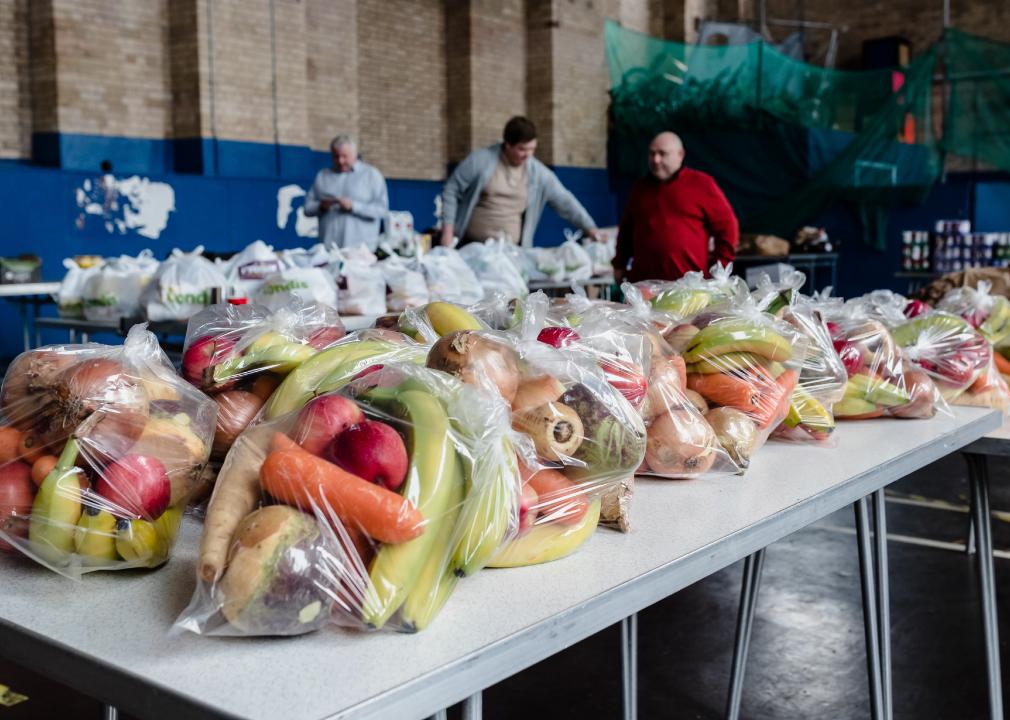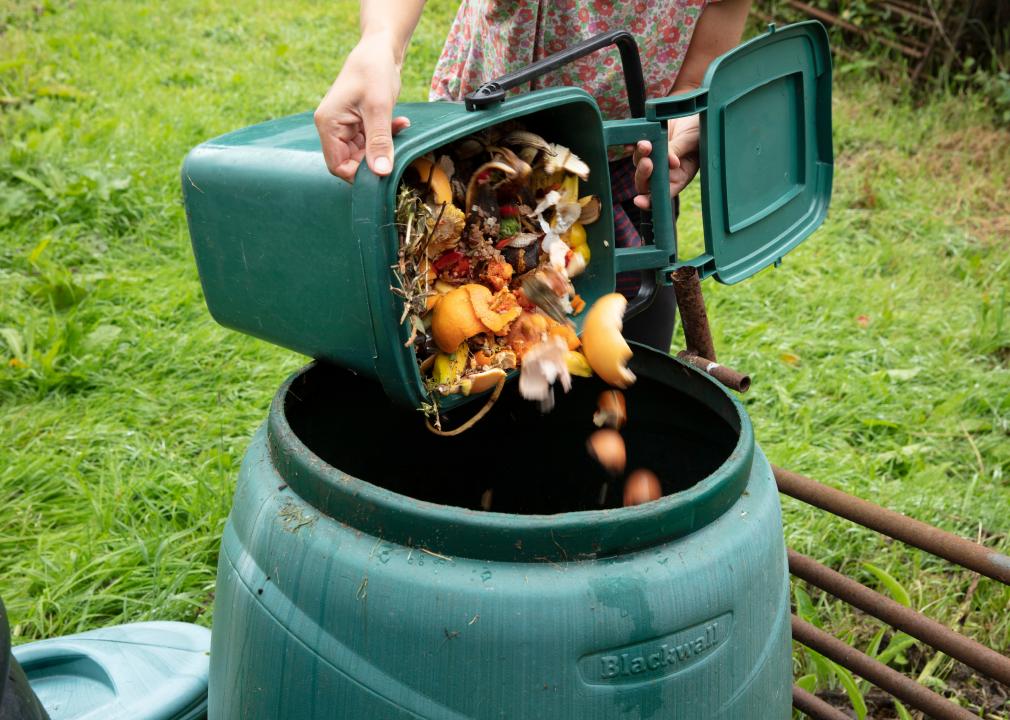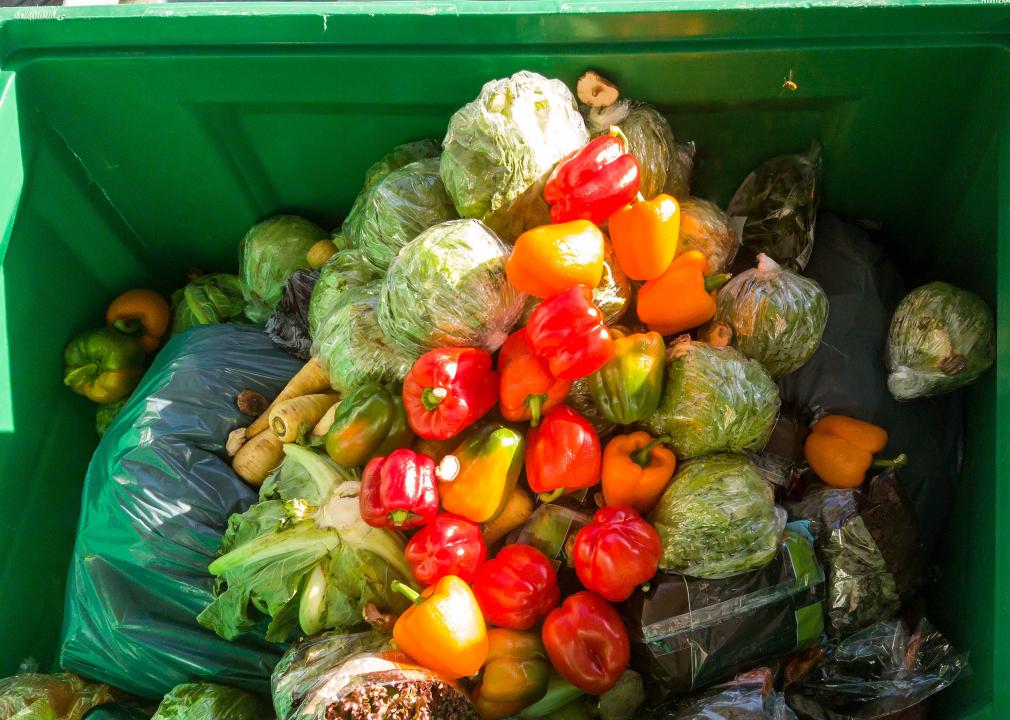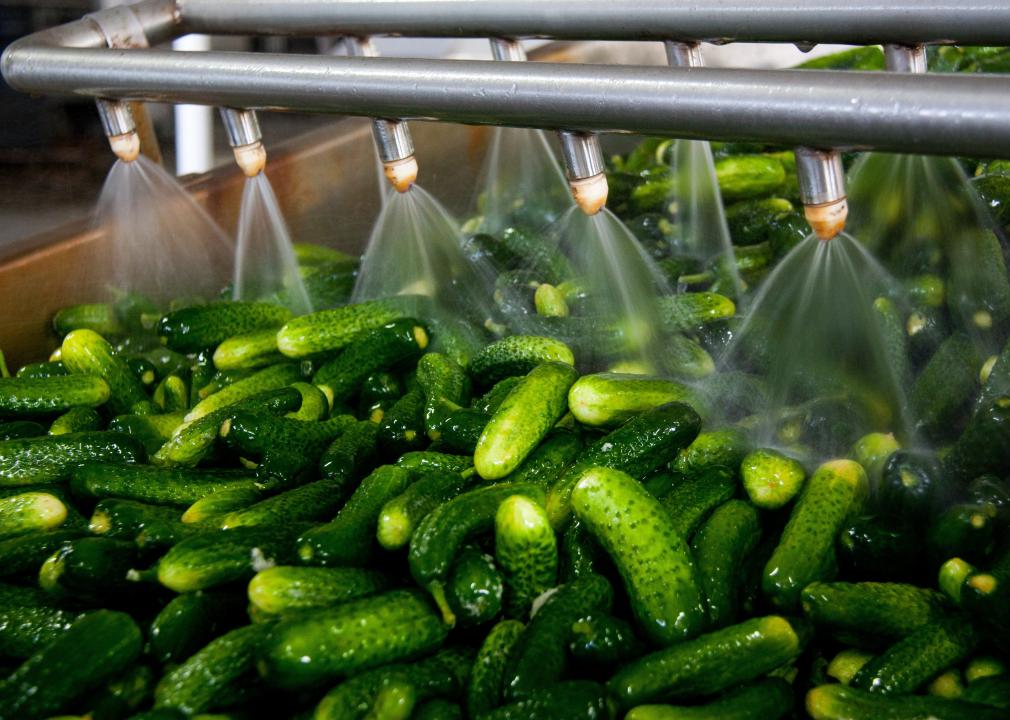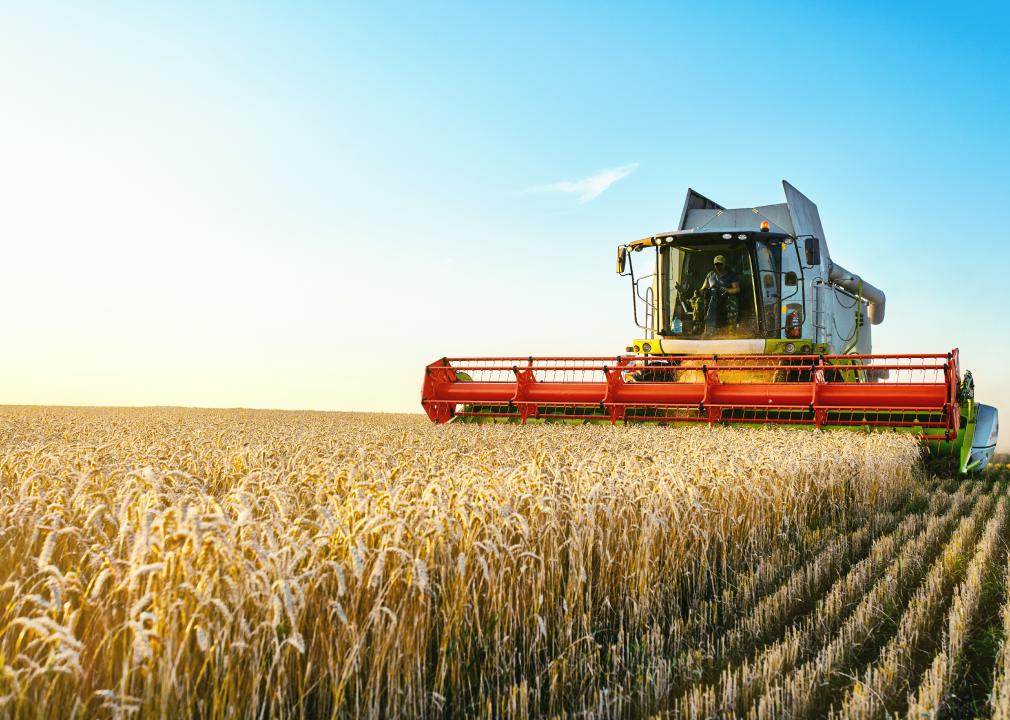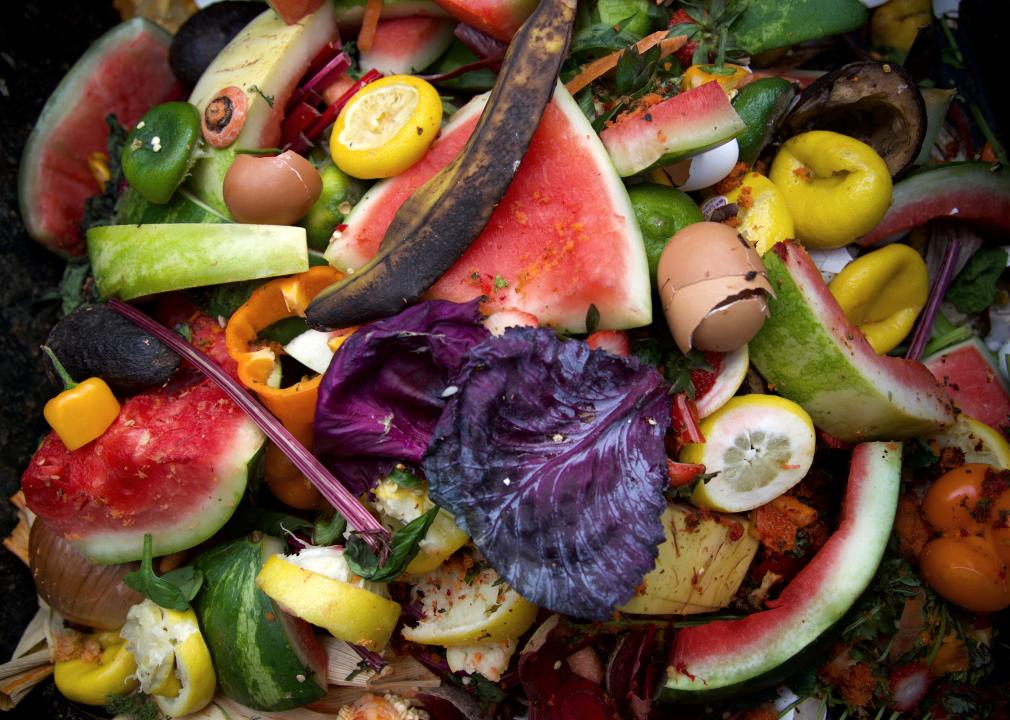In the United States, roughly 30% to 40% of food is wasted each year. Some of this food is wasted before it is ever harvested, while other food is wasted by consumers who throw it away. There are many solutions to help change this, but there is still a long way to go.
15 stats about food waste
Food waste is a big problem. In the United States, roughly 30% to 40% of food is wasted each year. Some of this food is wasted before it is ever harvested, while other food is wasted by consumers who throw it away.
Beyond the loss of food, this waste also has significant environmental and climate impacts. To uncover 15 fascinating statistics about food waste, Thistle analyzed numerous reports produced by the Environmental Protection Agency, the United Nations, and the Food and Drug Administration. These reports reveal metrics ranging from how much food goes to landfills annually to how much water and land are used to produce the food that gets thrown away each year.
Despite these sobering statistics, there are programs and initiatives looking at how to reduce food waste locally and globally. Many restaurants, supermarkets, and other businesses donate their food waste to food banks, where it is redistributed to those in need. Industrial food waste is sometimes repurposed as animal feed. And some households compost their food waste. Still, much of the world’s food waste ends up in landfills, where it produces methane, a greenhouse gas. When it comes to food waste, there is still a lot of work to be done.
Food waste is estimated to be up to 40% of the US food supply
In the United States, an estimated 30% to 40% of the food supply is wasted, according to the FDA. This is a problem for a number of reasons. First of all, it costs a lot of money—more than $400 billion in 2019, according to ReFed. In addition, all the water, energy, and labor used to produce this wasted food could have been reallocated for consumption instead of lost.
This wasted food makes up 18% of all cropland use, 14% of freshwater used, and 4% of U.S. greenhouse gas usage. While food waste has always been a problem, it has gotten worse over the past 50 years. In 1960, 12.2 million tons of food waste was generated. To compare, that number was 63 million tons in 2018.
In the United States, more than 35 million Americans live in food insecure environments, yet the EPA estimates that in 2018, there was more food waste in American landfills than any other single material, making up 24% of those landfills.
This is not just a humanitarian issue, but also a serious climate issue. Reducing the amount of food that goes into landfills would help address climate change since food waste that decomposes in landfills releases methane—a greenhouse gas nearly 30 times as potent as carbon dioxide. And since 20% of U.S. methane emissions come from landfills, reducing food waste in landfills would help lessen methane emissions.
Wasted food comprises 24% of US landfills
In the United States, more than 35 million Americans live in food insecure environments, yet the EPA estimates that in 2018, there was more food waste in American landfills than any other single material, making up 24% of those landfills.
This is not just a humanitarian issue, but also a serious climate issue. Reducing the amount of food that goes into landfills would help address climate change since food waste that decomposes in landfills releases methane—a greenhouse gas nearly 30 times as potent as carbon dioxide. And since 20% of U.S. methane emissions come from landfills, reducing food waste in landfills would help lessen methane emissions.
Americans waste 219 pounds of food per person annually
What all this food waste means on an individual level is that each American wastes an average of 219 pounds of food each year—that is as if each person in the United States threw out over 650 apples each year, according to RTS. The U.S. Department of Agriculture and the EPA announced the goal of cutting food waste in half by 2030 to help address this problem and to align with the United Nations’ Sustainable Development Goals.
The federal government will work with communities, organizations, and businesses along with local, state, and tribal governments to reach this goal. Businesses and organizations that make a public commitment to reduce food loss and waste by 50% by 2030 can become U.S. Food Loss and Waste 2030 Champions.
Nearly 7% of planted fields in the US are not harvested each year
Food can be wasted on the consumer end, but it is also sometimes wasted before it is even harvested at the farm. On average each year, 7% of planted fields in the United States are not harvested. This number varies widely between locations and crops, and it’s possible that at a particular operation, up to 50% might not be harvested.
An estimate by Feeding America shows that more than 6 billion pounds of fresh produce end up unharvested or unsold each year. And even harvested fields have food wastage, as produce that does not pass certain quality standards in terms of shape, size, ripeness, and color will be left behind.
51% of the US industrial sector’s wasted food goes to animal feed
The U.S. industrial sector includes food and beverage manufacturers and processors, and according to the EPA, generated around 39.8 million tons of wasted food in 2018. Of this wasted food, 51% was used in animal feed. Turning this waste into animal feed can be a good solution that helps manage the waste, conserve resources, and mitigate some effects of climate change. Compared to other sectors analyzed by the EPA, the industrial sector has a lower percentage of food going to landfills as opposed to commercial, institutional and residential sectors.
US households generate 25 million tons of food waste yearly
A study from the American Journal of Agricultural Economics found that the annual cost of the 25 million tons of food wasted by U.S. households is $240 billion, or $1,866 per household. The study also found that higher-income families waste more food than lower-income families. These families who waste more food also tend to have healthier diets, because they eat more fruits and vegetables, which are more perishable items. Some of the waste then comes from the food spoiling before the households have a chance to eat it.
Two-thirds of U.S. household food waste goes to landfills
Of the 25 million tons of wasted food, the majority—66%—goes to landfills. Another 15% is combusted, and another 15% to sewer/wastewater treatment. This takes place when food waste goes into the food waste disposal in the kitchen sink.
The disposal churns the food into a liquid slurry that then moves through the sewer system to the treatment plant, where it is broken down through a process called anaerobic digestion. This produces biogas, which can be captured and used for energy, or biosolids, which can be made into fertilizer. Only 3% of residential food waste gets composted.
33% of US retail and wholesale food waste ends up in landfills
The commercial sector, which includes food retail, food wholesale, and hospitality, generates around 12.7 million tons of food waste each year. One-third, or 4.2 million tons of that wasted food, ends up in landfills.
Nearly a quarter, 21%, of wasted food is donated to help feed the hungry through organizations like Feeding America. This food is rescued from restaurants and supermarkets, and collected and brought to food banks. Another 14% is sent for animal feed, and another 14% used for energy and fertilizer using co-digestion/anaerobic digestion.
Restaurants and food service accounts for 17.1 million tons of food waste
The hospitality sector generates an estimated 18.3 million tons of food waste each year. Of that food waste, restaurants and food service businesses account for 93%. Just over half (52%) of the food waste generated by the hospitality industry ends up in landfills
To help restaurants reduce food waste, the Natural Resources Defense Council recommends that cities should involve the food service sector in their efforts to reduce food waste. It produced the Tackling Food Waste in Cities: A Policy and Program Toolkit to offer guidance. Already cities like Nashville, Tennessee, and Denver have engaged restaurants in efforts to fight food waste using challenges that encourage businesses to adopt certain practices.
Food banks only generate 426,057 tons of food waste
Food banks are only a small generator of food waste. This tonnage is already accounted for in the estimates for other sectors, because those sectors donate their wasted food to food banks. This means that of the food donated by other industries, 426,057 tons cannot be redistributed and ends up wasted. Around 66% of this waste ends up in landfills.
Only 4.1% of wasted food in the US is composted
Of all the food waste, around 2.6 million tons is composted. Compost is created by combining organic material and waste, including food waste. This is then used by gardeners and farmers to improve the physical properties of soil. Composting not only benefits gardens and farms, but it also lowers methane emissions because the food used in composting does not go to landfills. Compost also enhances water retention in soil and sequesters carbon.
Global food waste creates 3.6 billion tons of carbon dioxide-equivalent greenhouse gas
If food waste were a country, it would be the third highest emitter of greenhouse gases after the United States and China. Global food waste creates 3.6 billion tons of greenhouse gases annually. If the entire planet were able to stop wasting food completely, 8% of total emissions would be eliminated.
Whether food is wasted before purchase or by consumers depends on where you live. In lower-income countries, 40% of food is wasted after it’s harvested, but before it actually makes it into people’s homes. In middle- and high-income countries however, it is estimated that consumers are more responsible—53% of food wasted in Europe and 47% of food wasted in Canada is by consumers.
To produce the amount of food Americans waste requires three times the water volume of Lake Geneva
When food is wasted, the food itself is not just lost, but also the resources it took to grow and process it. The Food and Agriculture Organization of the United Nations found that the amount of food Americans waste uses enough water to fill Switzerland’s Lake Geneva three times.
Globally, 45 trillion gallons of water are used every year for wasted food. That means that 24% of all water used for agriculture ends up essentially being wasted. And freshwater is already a scarce resource that is diminishing fast and will only become more in jeopardy with rising temperatures.
28% of the world’s agricultural area is used to produce wasted food
As with water, land used to grow wasted food is also wasted. Twenty-eight percent, or 3.5 billion acres, of the world’s agricultural land is used to produce food that ends up being tossed away. Again, similarly to water, land that is good for growing crops is becoming more scarce, so each time food is wasted, some of that land and the inputs used to grow them are wasted as well
“Food waste is a big deal,” said Timothy Searchinger, a senior fellow at the World Resources Institute and a Princeton University researcher, in a Washington Post article on the subject. “It results in large increases in land use demands, other inputs, and greenhouse gas emissions.”
Global food waste could feed 2 billion people a year
Along with the wasted resources, the loss of the food itself is also extremely important, especially as 815 million people worldwide do not have enough to eat. The amount of food that is wasted globally every year could feed 2 million people—over three times as many as the amount who go hungry.
Hunger is more complicated than food waste, however—the reasons so many people go hungry in a world that produces enough food for 10 billion people has more to do with economics and inequality. Still, given the social and environmental impacts of food waste, it is an important problem to try to fix.
There's still a significant way to go in reducing our food waste. Education is a key component to that effort, with promising actions already underway from the top-down. From corporations to consumers, there is work being done to reduce food waste; from better inventory tracking and transportation to buying local and establishing compost initiatives. Donating food waste to food banks or even local farms keeps it out of the waste stream; and meal planning, sticking to grocery lists, and composting scraps will help keep food waste out of your kitchen at home.
In the United States, roughly 30% to 40% of food is wasted each year. Some of this food is wasted before it is ever harvested, while other food is wasted by consumers who throw it away. There are many solutions to help change this, but there is still a long way to go.
15 stats about food waste
Food waste is a big problem. In the United States, roughly 30% to 40% of food is wasted each year. Some of this food is wasted before it is ever harvested, while other food is wasted by consumers who throw it away.
Beyond the loss of food, this waste also has significant environmental and climate impacts. To uncover 15 fascinating statistics about food waste, Thistle analyzed numerous reports produced by the Environmental Protection Agency, the United Nations, and the Food and Drug Administration. These reports reveal metrics ranging from how much food goes to landfills annually to how much water and land are used to produce the food that gets thrown away each year.
Despite these sobering statistics, there are programs and initiatives looking at how to reduce food waste locally and globally. Many restaurants, supermarkets, and other businesses donate their food waste to food banks, where it is redistributed to those in need. Industrial food waste is sometimes repurposed as animal feed. And some households compost their food waste. Still, much of the world’s food waste ends up in landfills, where it produces methane, a greenhouse gas. When it comes to food waste, there is still a lot of work to be done.
Food waste is estimated to be up to 40% of the US food supply
In the United States, an estimated 30% to 40% of the food supply is wasted, according to the FDA. This is a problem for a number of reasons. First of all, it costs a lot of money—more than $400 billion in 2019, according to ReFed. In addition, all the water, energy, and labor used to produce this wasted food could have been reallocated for consumption instead of lost.
This wasted food makes up 18% of all cropland use, 14% of freshwater used, and 4% of U.S. greenhouse gas usage. While food waste has always been a problem, it has gotten worse over the past 50 years. In 1960, 12.2 million tons of food waste was generated. To compare, that number was 63 million tons in 2018.
In the United States, more than 35 million Americans live in food insecure environments, yet the EPA estimates that in 2018, there was more food waste in American landfills than any other single material, making up 24% of those landfills.
This is not just a humanitarian issue, but also a serious climate issue. Reducing the amount of food that goes into landfills would help address climate change since food waste that decomposes in landfills releases methane—a greenhouse gas nearly 30 times as potent as carbon dioxide. And since 20% of U.S. methane emissions come from landfills, reducing food waste in landfills would help lessen methane emissions.
Wasted food comprises 24% of US landfills
In the United States, more than 35 million Americans live in food insecure environments, yet the EPA estimates that in 2018, there was more food waste in American landfills than any other single material, making up 24% of those landfills.
This is not just a humanitarian issue, but also a serious climate issue. Reducing the amount of food that goes into landfills would help address climate change since food waste that decomposes in landfills releases methane—a greenhouse gas nearly 30 times as potent as carbon dioxide. And since 20% of U.S. methane emissions come from landfills, reducing food waste in landfills would help lessen methane emissions.
Americans waste 219 pounds of food per person annually
What all this food waste means on an individual level is that each American wastes an average of 219 pounds of food each year—that is as if each person in the United States threw out over 650 apples each year, according to RTS. The U.S. Department of Agriculture and the EPA announced the goal of cutting food waste in half by 2030 to help address this problem and to align with the United Nations’ Sustainable Development Goals.
The federal government will work with communities, organizations, and businesses along with local, state, and tribal governments to reach this goal. Businesses and organizations that make a public commitment to reduce food loss and waste by 50% by 2030 can become U.S. Food Loss and Waste 2030 Champions.
Nearly 7% of planted fields in the US are not harvested each year
Food can be wasted on the consumer end, but it is also sometimes wasted before it is even harvested at the farm. On average each year, 7% of planted fields in the United States are not harvested. This number varies widely between locations and crops, and it’s possible that at a particular operation, up to 50% might not be harvested.
An estimate by Feeding America shows that more than 6 billion pounds of fresh produce end up unharvested or unsold each year. And even harvested fields have food wastage, as produce that does not pass certain quality standards in terms of shape, size, ripeness, and color will be left behind.
51% of the US industrial sector’s wasted food goes to animal feed
The U.S. industrial sector includes food and beverage manufacturers and processors, and according to the EPA, generated around 39.8 million tons of wasted food in 2018. Of this wasted food, 51% was used in animal feed. Turning this waste into animal feed can be a good solution that helps manage the waste, conserve resources, and mitigate some effects of climate change. Compared to other sectors analyzed by the EPA, the industrial sector has a lower percentage of food going to landfills as opposed to commercial, institutional and residential sectors.
US households generate 25 million tons of food waste yearly
A study from the American Journal of Agricultural Economics found that the annual cost of the 25 million tons of food wasted by U.S. households is $240 billion, or $1,866 per household. The study also found that higher-income families waste more food than lower-income families. These families who waste more food also tend to have healthier diets, because they eat more fruits and vegetables, which are more perishable items. Some of the waste then comes from the food spoiling before the households have a chance to eat it.
Two-thirds of U.S. household food waste goes to landfills
Of the 25 million tons of wasted food, the majority—66%—goes to landfills. Another 15% is combusted, and another 15% to sewer/wastewater treatment. This takes place when food waste goes into the food waste disposal in the kitchen sink.
The disposal churns the food into a liquid slurry that then moves through the sewer system to the treatment plant, where it is broken down through a process called anaerobic digestion. This produces biogas, which can be captured and used for energy, or biosolids, which can be made into fertilizer. Only 3% of residential food waste gets composted.
33% of US retail and wholesale food waste ends up in landfills
The commercial sector, which includes food retail, food wholesale, and hospitality, generates around 12.7 million tons of food waste each year. One-third, or 4.2 million tons of that wasted food, ends up in landfills.
Nearly a quarter, 21%, of wasted food is donated to help feed the hungry through organizations like Feeding America. This food is rescued from restaurants and supermarkets, and collected and brought to food banks. Another 14% is sent for animal feed, and another 14% used for energy and fertilizer using co-digestion/anaerobic digestion.
Restaurants and food service accounts for 17.1 million tons of food waste
The hospitality sector generates an estimated 18.3 million tons of food waste each year. Of that food waste, restaurants and food service businesses account for 93%. Just over half (52%) of the food waste generated by the hospitality industry ends up in landfills
To help restaurants reduce food waste, the Natural Resources Defense Council recommends that cities should involve the food service sector in their efforts to reduce food waste. It produced the Tackling Food Waste in Cities: A Policy and Program Toolkit to offer guidance. Already cities like Nashville, Tennessee, and Denver have engaged restaurants in efforts to fight food waste using challenges that encourage businesses to adopt certain practices.
Food banks only generate 426,057 tons of food waste
Food banks are only a small generator of food waste. This tonnage is already accounted for in the estimates for other sectors, because those sectors donate their wasted food to food banks. This means that of the food donated by other industries, 426,057 tons cannot be redistributed and ends up wasted. Around 66% of this waste ends up in landfills.
Only 4.1% of wasted food in the US is composted
Of all the food waste, around 2.6 million tons is composted. Compost is created by combining organic material and waste, including food waste. This is then used by gardeners and farmers to improve the physical properties of soil. Composting not only benefits gardens and farms, but it also lowers methane emissions because the food used in composting does not go to landfills. Compost also enhances water retention in soil and sequesters carbon.
Global food waste creates 3.6 billion tons of carbon dioxide-equivalent greenhouse gas
If food waste were a country, it would be the third highest emitter of greenhouse gases after the United States and China. Global food waste creates 3.6 billion tons of greenhouse gases annually. If the entire planet were able to stop wasting food completely, 8% of total emissions would be eliminated.
Whether food is wasted before purchase or by consumers depends on where you live. In lower-income countries, 40% of food is wasted after it’s harvested, but before it actually makes it into people’s homes. In middle- and high-income countries however, it is estimated that consumers are more responsible—53% of food wasted in Europe and 47% of food wasted in Canada is by consumers.
To produce the amount of food Americans waste requires three times the water volume of Lake Geneva
When food is wasted, the food itself is not just lost, but also the resources it took to grow and process it. The Food and Agriculture Organization of the United Nations found that the amount of food Americans waste uses enough water to fill Switzerland’s Lake Geneva three times.
Globally, 45 trillion gallons of water are used every year for wasted food. That means that 24% of all water used for agriculture ends up essentially being wasted. And freshwater is already a scarce resource that is diminishing fast and will only become more in jeopardy with rising temperatures.
28% of the world’s agricultural area is used to produce wasted food
As with water, land used to grow wasted food is also wasted. Twenty-eight percent, or 3.5 billion acres, of the world’s agricultural land is used to produce food that ends up being tossed away. Again, similarly to water, land that is good for growing crops is becoming more scarce, so each time food is wasted, some of that land and the inputs used to grow them are wasted as well
“Food waste is a big deal,” said Timothy Searchinger, a senior fellow at the World Resources Institute and a Princeton University researcher, in a Washington Post article on the subject. “It results in large increases in land use demands, other inputs, and greenhouse gas emissions.”
Global food waste could feed 2 billion people a year
Along with the wasted resources, the loss of the food itself is also extremely important, especially as 815 million people worldwide do not have enough to eat. The amount of food that is wasted globally every year could feed 2 million people—over three times as many as the amount who go hungry.
Hunger is more complicated than food waste, however—the reasons so many people go hungry in a world that produces enough food for 10 billion people has more to do with economics and inequality. Still, given the social and environmental impacts of food waste, it is an important problem to try to fix.
There's still a significant way to go in reducing our food waste. Education is a key component to that effort, with promising actions already underway from the top-down. From corporations to consumers, there is work being done to reduce food waste; from better inventory tracking and transportation to buying local and establishing compost initiatives. Donating food waste to food banks or even local farms keeps it out of the waste stream; and meal planning, sticking to grocery lists, and composting scraps will help keep food waste out of your kitchen at home.







